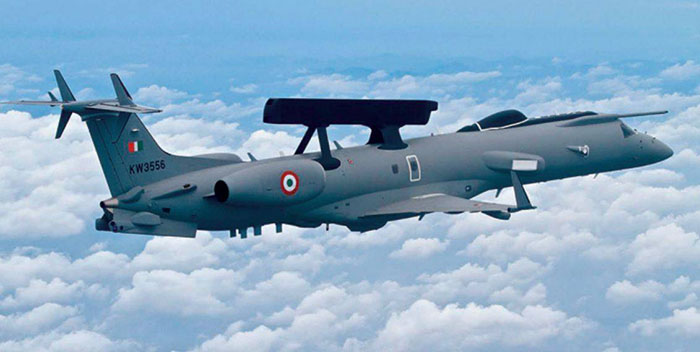DRDO’s AWACS program
February 16, 2017 | Expert Insights
Is the IAF lacking in this force-multiplier technology?
Why are AWACS so Important?
Airborne warning and Control System (AWACS) is a force-multiplier technology, available with modern air forces around the world. By operating radars from airborne platforms, airspace can be monitored from ranges of more than 400 Kms away. The AWACS is akin to an operational HQs, in the air; it can discern threats and provide early warning of enemy aircraft & missiles and also direct own aircraft and air defence systems, to neutralize the threat.
China is assessed to have more than 20 AWACS, while Pakistan is expected to shortly have a capability of at least eight AWACS.
What does the IAF have?
In 2004, India acquired three Israeli Phalcon radars mounted on Russia IL-76 aircraft, at a cost of US$ 1.1 billion. While India is in the process of negotiating for three more, the IAF requires at least 20 such systems. The prohibitive costs of these imported systems make indigenous production efforts attractive and the government has consistently encouraged efforts of the DRDO.
Why Did the DRDO Effort Stumble?
The initial DRDO effort to create an airborne radar commenced in the late 1990s. However, in 1999, the project was cancelled, when the prototype crashed killing eight scientists and the aircrew.
Where have we Reached?
The indigenous effort was revived in 2004, with prime responsibilities vesting with the Centre for AB Systems (CABS), Bangalore and the Defence Electronics Applications Laboratory (DEAL), Dehradun. The platform selected for the prototype were three Brazilian Embraer ERJ 145 aircraft, procured at a cost of US$ 300 million. The initial project goal for these three systems was 2013 but they were finally inducted during the IAF Fly Past on Republic Day, 2017. The equipment was also displayed during the Aero India Exhibition, at Bangalore, in Feb 2017. The indigenous mini AWACS have a coverage of only 270-degrees unlike the Israeli Phalcons, which have 360-degree coverage. Produced at a cost of US$ 340 million, the indigenous effort is also a technology demonstrator for the more ambitious AWACS-India project.
What is the AWACS-India Project?
In Mar 2015, the Defence Acquisition Counsel (DAC) approved the production of two DRDO-made AWACS, at an estimated cost of US$ 736 million. The new systems shall be mounted on specially manufactured Airbus-330 airliners and are expected to be inducted by 2020. Six more systems could be cleared, at a later stage.
Assessment
From the setback in 1999, the DRDO has made steady progress in the production of indigenous AWACS. However, even this commendable effort may be inadequate to keep pace with the speed of technology change. Space-based Warning & Control Systems (SWACS) are expected to become more advantages than AWACS, when they are developed. However, similar to the mini AWACs being a technology demonstrator for AWACS-India, the latter could become the trail-blazer for an Indian SWACS.


